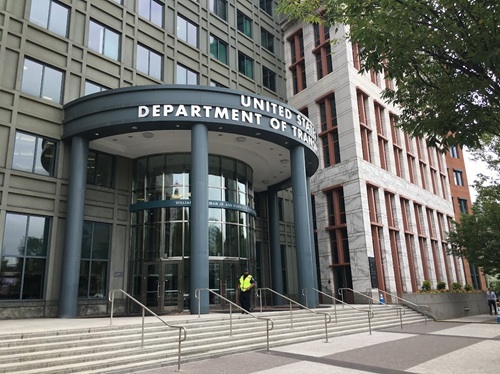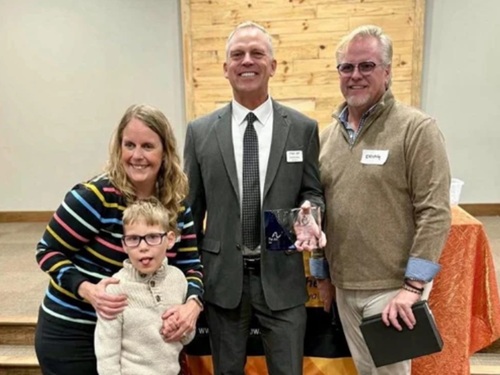The American Association of State Highway and Transportation Officials recently hosted a knowledge session, sponsored by TranSystems, at its 2023 Spring Meeting in Seattle that delved into ways to improve transportation connections for rural areas of the United States.
[Above photo by AASHTO]
“The nation depends on its transportation network to move not only goods but the workers that produce those goods – and rural transportation networks play a vital role in that movement,” explained Martin Knopp, associate administrator for operations for the Federal Highway Administration.
“Right now a lot of what we are doing is looking at ways to prepare the way ahead; how to link together rural transportation needs in different parts of the country,” he said. “We are working with different entities to bring resources together to address those issues.”
Amy Scarton, deputy director for the Washington State Department of Transportation, explained her state is like many across the country – one with both wide open swaths of rural territory, home to numerous agricultural enterprises, alongside “intense” urban areas.
“In Washington State, three-fourths of our population resides on the west side of the Cascades mountain range, with 50 percent of those people located in just three of our largest counties,” she said. “What that leaves is 39 counties sparsely populated. It also makes land available for agricultural needs; we grow more hops than Germany.”
Scarton said the trick for state DOTs is how to serve the transportation needs of an entire state, especially in sparsely populated areas. “Putting that together with our urban transportation needs is a challenge,” she pointed out. “We have 32 public transit agencies across the state and WSDOT operates the largest publicly-owned van fleet in the state as well as a ferry system. It’s all about providing access: to jobs, to grocery stores, to medical appointments. On top of that, almost 30 percent of our citizens don’t drive, so we have to evaluate active transportation options as well – walking, bicycling, etc. All of that means we really have to engage at the local level – and that is supremely important for rural communities. That’s why we, WSDOT, have to become a ‘one stop shop’ for addressing a wide range of mobility needs.”
John Binder, deputy commissioner for the Alaska Department of Transportation and Public Facilities, said the “rural connectivity” issue becomes even more challenging in his state as so many locales are only accessible by air.
“Alaska is by definition rural – we really only have three or four truly urban communities,” he explained. “We are also unique in the airport realm as the state DOT owns and operates all of them, which is critical because 82 percent of our communities rely on the airport network to move goods and people. That is why community-driven planning is key, especially for tribal nations; with the remoteness of Alaska, costs to move anything can be high – for example, everything has to be hauled in overland or by water to build airports and other aviation facilities.”
Though Alaska DOT&PF maintains a road network and maritime ferry system, both are subject to harsh seasonal weather conditions – especially in the winter. “Essentially all freight is coming into Alaska by barges, so maritime resiliency is an issue – we have major coastal storms and late season ice formation,” he said. “Winter maintenance is huge; it lasts nine months and conditions vary a lot.”
Julie White, deputy secretary for multimodal transportation at the North Carolina Department of Transportation, added that in her state over 50 percent of the population lives in rural areas. Thus, like WSDOT, NCDOT must manage the mobility needs of “very intense” urban areas, yet those networks need to be aligned with rural areas as well.
Yet, like Alaska DOT&PF, NCDOT said the key to successfully managing those different transportation needs boils down to community engagement. “For example, we plan the ‘place’ around transit, looking at land use plans and infrastructure investments as walkability and density are proving key to economic development,” White said.
She also believes so-called “microtransit” systems could be provide a key mobility benefit to rural parts of North Carolina. “We have 98 transit systems that carry 68.2 million passengers per year and provide 12,000 jobs,” she said. “We think microtransit could be a game changer for rural transit – providing Uber-style connections for rural residents, especially between rural communities and urban hospitals and medical facilities. That is seen as a key link micro-transit could fulfill.”
 Top Stories
Top Stories
USDOT Issues $1B in Local Road Safety Funding
January 2, 2026 Top Stories
Top Stories

